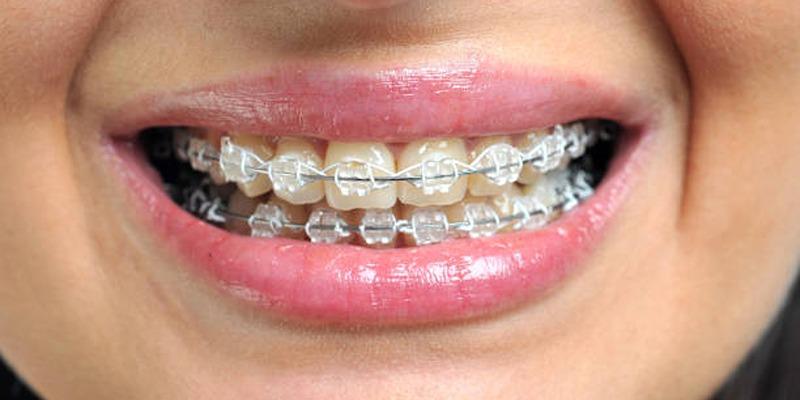Ceramic braces are among the most commonly used types of orthodontic appliances that should suit people who do not wish to have their braces noticed by others. While conventional brackets are made from metal strips, the ceramic ones are made of either clear or tooth-colored material so people might not notice them easily. These braces are preferred by teenage and adults who would like to undergo orthodontic treatment but feel that it is inconducive for the working adult to have conspicuous brackets on the teeth. Since they work like metal braces do, they apply constant force on the teeth till they align in the correct position. As a form of aesthetic improvement, there are certain aspects that people should know about them including their features, how to take care of them and the price they will be willing to pay for the braces.
What Are Ceramic Braces?
Ceramic braces are a form of orthodontic appliance akin to traditional metal braces, distinguished by one key feature: the brackets are crafted from tooth-colored ceramic material, allowing them to blend more seamlessly with natural teeth. This characteristic renders ceramic braces less conspicuous than their metal counterparts, making them a favorable option for both teenagers and adults seeking a more discreet treatment alternative.
How Do Ceramic Braces Work?
Ceramic braces work by using a combination of brackets, archwires, and elastic bands to apply gentle pressure to the teeth, gradually shifting them into their ideal position. The brackets are bonded to the front of each tooth, and the archwire runs through each bracket. Over time, orthodontic adjustments move the teeth into alignment, improving both function and appearance.
Benefits of Ceramic Braces:
Ceramic braces offer several advantages that make them appealing to people who prioritize aesthetics during their orthodontic treatment.
- Less Noticeable: Ceramic braces are designed to blend with the natural color of your teeth, making them much less noticeable than metal braces. This discreet appearance is particularly desirable for adults and teens who may feel self-conscious about wearing braces.
- Effective for Various Dental Issues: Like metal braces, ceramic braces can effectively treat a range of orthodontic issues, including overcrowding, gaps, crooked teeth, and misaligned bites. They provide the same functionality as traditional braces, making them versatile and reliable.
- Comfortable Design: The ceramic material used in these braces tends to be smoother than metal, which can reduce irritation to the gums and inner cheeks. Although any type of braces may cause some initial discomfort, ceramic braces often provide a more comfortable experience.
- Suitable for Complex Cases: While some people may prefer clear aligners, these are not always effective for severe misalignment. Ceramic braces are suitable for more complex cases, making them a practical alternative when aligners may not work.
Drawbacks of Ceramic Braces:
While ceramic braces have distinct advantages, they also have a few downsides that should be considered.
- Higher Cost: Ceramic braces are typically more expensive than metal braces due to the advanced materials and discreet design. The additional cost may vary depending on your orthodontist, but its a factor worth considering.
- Potential for Staining: Although ceramic brackets are stain-resistant, the elastic bands that hold the wire in place can stain over time, especially when exposed to certain foods and beverages.
- Durability Concerns: Ceramic is more brittle than metal, making the brackets more susceptible to chipping or breaking. Patients with ceramic braces need to be cautious about the foods they eat and should avoid biting into hard or sticky items.
- Slightly Longer Treatment Time: Due to the material's fragility, orthodontists often apply gentler adjustments to avoid damaging the braces, which can result in a slightly longer treatment time compared to metal braces.
Who Should Consider Ceramic Braces?

Ceramic braces are an excellent choice for those seeking an effective yet discreet orthodontic solution. They are particularly well-suited for:
- Teens and Adults: Both demographics commonly prefer less visible orthodontic options for aesthetic reasons.
- Individuals with Mild to Moderate Dental Issues: While ceramic braces can effectively address complex cases, they are often favored by those with mild to moderate alignment needs who desire a subtler treatment.
- Professionals and Students: For individuals aiming to maintain a polished appearance in social or professional environments, ceramic braces strike a perfect balance between effectiveness and aesthetics.
Care and Maintenance of Ceramic Braces:
Proper care is crucial for maintaining ceramic braces in optimal condition and preventing staining. Here are some helpful tips:
- Brush After Every Meal: Brushing promptly after meals helps eliminate food particles and prevents staining of the bands. Use a soft-bristle toothbrush and fluoride toothpaste for best results.
- Utilize an Interdental Brush: Regular brushing may not thoroughly clean around the brackets, so using an interdental brush can help reach tight spaces.
- Floss Daily: Employ orthodontic flossers or a floss threader to clean between the teeth and beneath the wire. Daily flossing reduces the risk of plaque buildup, which can lead to gum issues and staining.
- Limit Staining Foods: Certain foods and beverages, such as coffee, tea, curry, and berries, can stain the elastic bands around the ceramic brackets. Limiting these items or rinsing your mouth afterward can help mitigate staining.
- Schedule Regular Check-Ups: Frequent visits to your orthodontist ensure that your braces are in good condition and properly adjusted. They can also replace any stained or worn-out elastic bands.
Common Myths About Ceramic Braces:

- Ceramic Braces Are Just for Aesthetic Purposes: While ceramic braces are less visible, they also effectively address a wide range of orthodontic issues, not solely for cosmetic alignment.
- Ceramic Braces Stain Easily: Though the bands can stain, the ceramic brackets themselves are typically stain-resistant. With proper care, staining can be minimized.
- Ceramic Braces Lack Durability: Although ceramic braces are more delicate than metal ones, they are still a viable option for most orthodontic treatments. With mindful eating habits, they can endure the entire treatment period without significant problems.
- Ceramic Braces Take Longer Than Metal Braces: While some cases may require slightly more time due to gentler adjustments, the difference in treatment duration is usually minimal.
Conclusion:
Ceramic braces provide an effective and discreet option for individuals seeking to enhance their dental alignment. They offer a harmonious blend of aesthetics and functionality, making them a preferred choice for many teens and adults. However, its essential to consider the benefits, costs, and potential maintenance requirements before making a decision. Consulting with an experienced orthodontist will offer personalized insights into whether ceramic braces are the best fit for your needs. With proper care, ceramic braces can help you achieve a beautifully aligned smile both discreetly and effectively.













